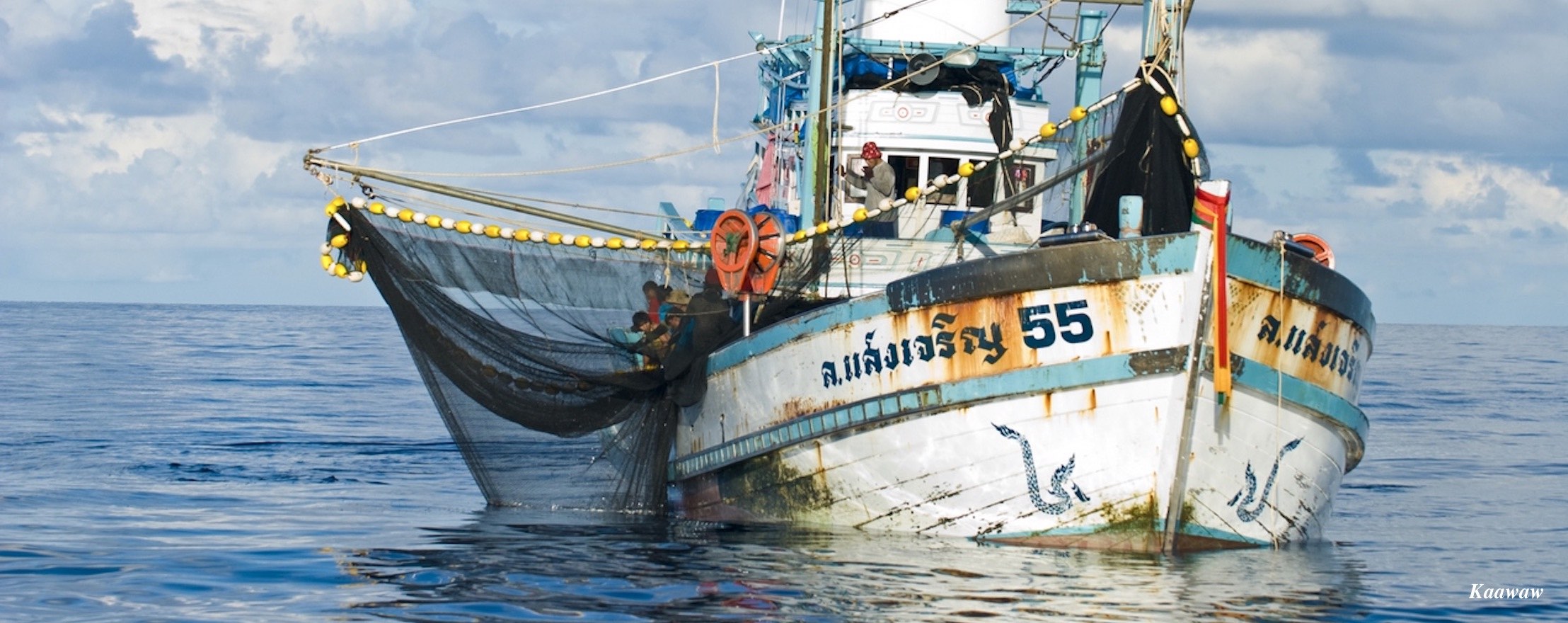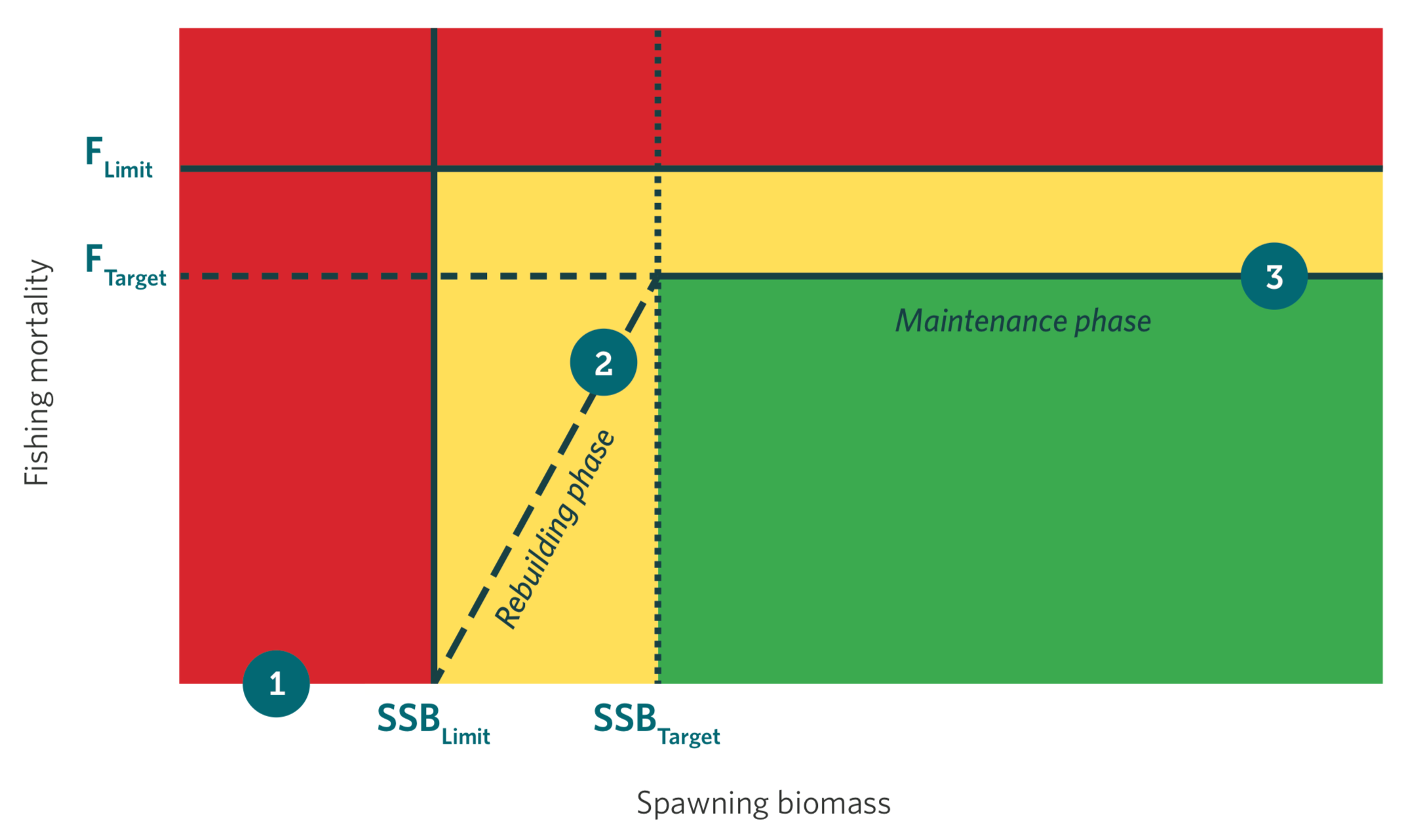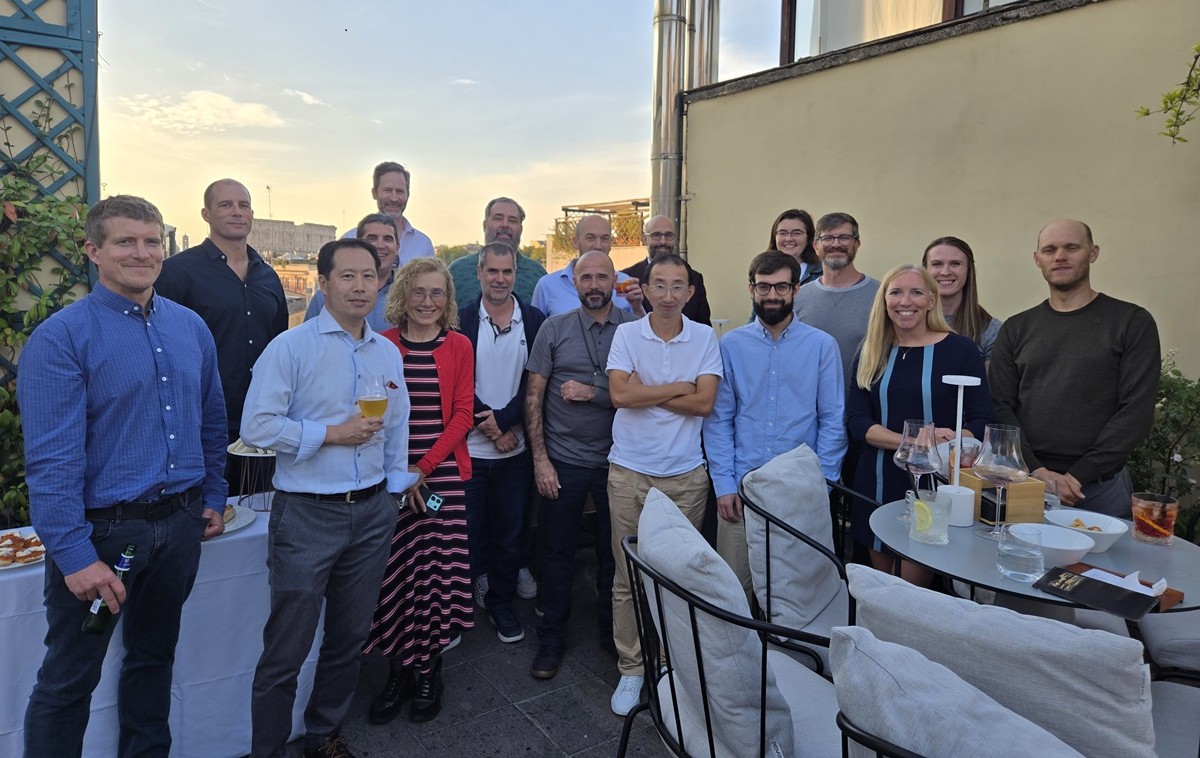
Harvest control rules (HCRs) are the operational component of a harvest strategy, essentially pre-agreed guidelines that determine how much fishing can take place, based on indicators of the targeted stock’s status. HCRs range from basic, constant catch strategies—under which catch levels do not change—to complicated, multistep rules that set allowable catch based on triggers.
Empirical HCRs: Indicators on which fishing opportunities are set come from one or more direct measures of stock status, such as:
Model-based HCRs: Indicators are based on models, such as:
Stock status can be represented graphically by what is known as a Kobe plot. The example below shows a basic HCR. The fishery’s ideal state is green, its cautionary state is yellow, and the state to avoid is red. The HCR has the following specifications:

Ⓒ 2016 The Pew Charitable Trusts
FACTSHEET: Harvest Control Rules; Language Options: Español 🇪🇸 • Français 🇫🇷 • 日本 🇯🇵 • ไทย 🇹🇭
Our new blog post covers the ups and downs of this year's just-wrapped ICCAT annual meeting - from a new management procedure for W Atlantic skipjack to a higher-than-advised TAC for Atlantic bluefin tuna in the west. Read more here:
The GFCM has adopted 2025’s first international #harveststrategy, choosing a precautionary, science-based rule for blackspot seabream in the Alboran Sea. With the stock at only ~5% of unfished levels, this is a key step toward recovery and sustainability:
Upcoming trilateral (EU-NO-UK) talks are crucial for North Sea herring. Managers can adopt a new #MSE-tested long-term management strategy that considers herring’s ecosystem role and supports stable, sustainable catches for 2026 and beyond. Read more:

November 10, 2025
HarvestStrategies.org serves as a resource for fisheries scientists, managers, and other stakeholders, compiling information about how harvest strategies work and how implementing this pioneering management approach can lead to sustainable, profitable fisheries and successful recovery programs for many species around the world. The site is managed by The Ocean Foundation’s International Fisheries Conservation Project with support from The Pew Charitable Trusts and the Common Oceans Tuna Fisheries Project, which is funded by GEF and implemented by FAO.
| Status | Description |
|---|---|
| This item has been adopted | |
| This item is in development | |
| This item is behind / stalled | |
| This item has not been started yet |